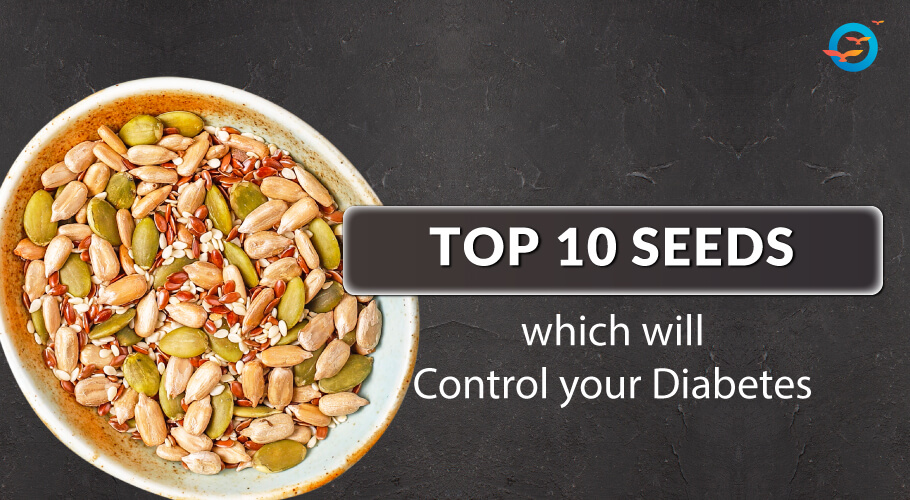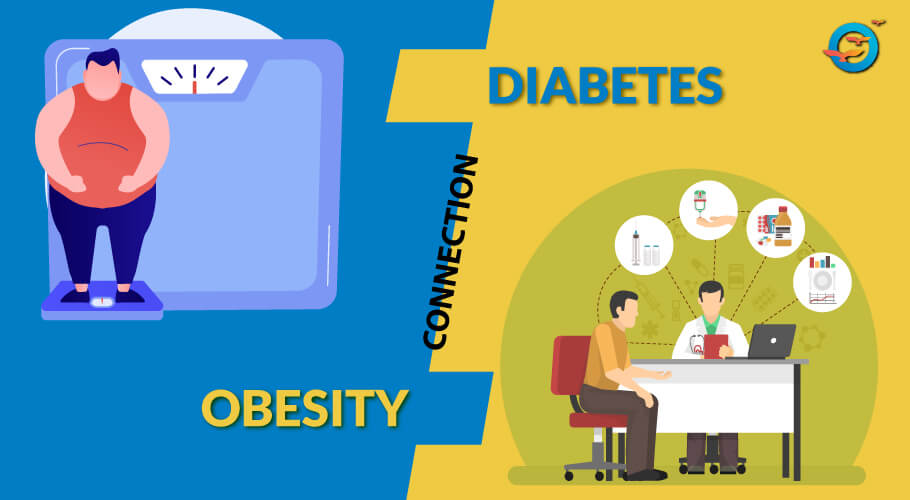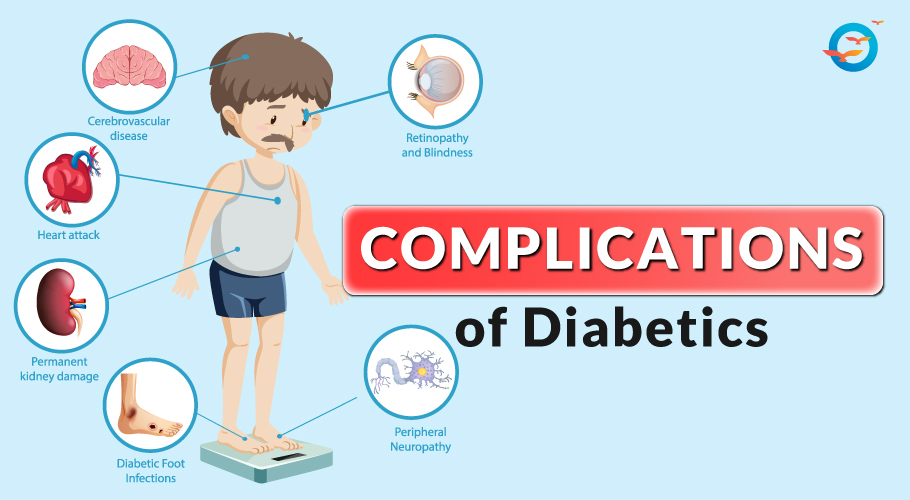History of Diabetes: Challenges and its Solutions

For as long back as memory goes, Diabetes has been considered a lifetime disorder that can only be medicated to control it; a disorder that grows steadily worse, bringing ever higher medication and dosages and more and more health complications.
However, thanks to the pioneering works of people like Dr. Neal Barnard, Gabriel Cousenz, and India’s own pioneer, Dr. Pramod Tripathi, there is new hope—not just for diabetics but anyone suffering from disorders relating to insulin resistance, which is the real root cause of diabetes.
This article takes a deep dive into this deadly disorder, starting from its history to root causes to a few of the challenges diabetics face in their day to day life and how diabetics and their caregivers can address these challenges.
History of Diabetes

Way back in 1552 BC a physician named Hesy Ra recorded a new disease that had symptoms like frequent urination. Other healers, such as Sushruta, Arataeus, and Thomas Willis were meanwhile working on treatments for the same disease.
The Greeks were already prescribing exercise as a treatment. The sweetness of the urine was also noticed—probably through the insects being attracted to it—which let to Shshruta, an eminent Indian healer who lived and practiced sometime in the 6th century BC, naming is Madhumeha, which means honey urine.
Other doctors of the time had also begun to diagnose diabetes from this symptom, leading to it being known as sugar urine disease. Since then diagnosis and treatment of diabetes has come a long, long way. So has our understanding of this disease, which has led to better and more sustainable ways to control and even reverse it—unthinkable even just a few decades ago.
To trace the full journey of diabetes down the ages, read our blog post on the topic here
Complications of Diabetes
Diabetes is diagnosed basis the percentage of glucose in the bloodstream. If it continues to remain high, it leads to diverse and seemingly unconnected complications from heart problems to kidney disease.
Every organ from the tips of your toes to the brain are damaged by consistently high or low blood sugar. Microvascular complications, i.e. damage to smaller blood vessels, damage organs like eyes, kidneys, and nerves.
Macrovascular Complications on the other hand are damage to the larger blood vessels that send blood to the heart, brain, legs, etc. Damage to these vessels leads to plaque build-up, and this sets the stage for strokes.
This can be avoided, simply by controlling blood sugar levels (BSL). And this can be done effectively through diet, exercise, and stress release. With a proper routine in place, patients can even reverse diabetes and get free from medicines for life.
This article takes a look at the various complications of diabetes, and how you can avoid them.
Understanding high morning (fasting) sugar readings

Diabetics regularly check their BSL to ensure it stays within normal ranges. The fasting check, aka, Pre-Prandial (PP) test, which is done early in the morning before consuming any food, is a critical check. And the results are often dismaying to many diabetics.
Even if their BSL counts are well within normal ranges, and regardless of their regimen of diet and exercise practiced the day before, several diabetics find that their morning readings remain stubbornly high.
In our article Why your fasting blood sugar is high in the morning and what you can do about it, we clarify the scientific reason for this phenomenon, which is aka, the Dawn Phenomenon. The article also offers tips to address this problem. If you are anyone you know suffers from this problem, don’t miss this short but insightful read.
Milk and Diabetes
Milk is a staple in diets across the world, and India is no different. From our milky morning tea to our dahi and Dahi-based dishes to desserts made from it, dairy milk and its products have a special place in our larders and our hearts. While, it has traditionally been prized as a source of calcium, carbohydrates, and protein, more and more studies are disputing this fact.
Diabetes reversal pioneers like Dr. Neal Barnard and Dr. Pramod Tripathi strongly recommend cutting it out from your diet, for several reasons, including milk’s high-fat content and the Insulin-like Growth Factor (IGF) molecule it contains.
Fat in mink contributes to myocellularlipids (i.e. fat inside your cells), and IGF both block the function of insulin, leading to a rising accumulation of glucose in the bloodstream and ultimately diabetes. So is really milk good for you?
Our article The truth about dairy offers some insights, and solutions.
Indian Herbs

The first line of treatment for diabetes has always been oral medicine, and this inevitably progresses to higher dosages and finally insulin. However, nature has blessed us with a variety of herbs and spices that are naturally anti-diabetic.
Ayurveda commonly prescribes medicines made from them. And these are not esoteric or rare herbs. Herbs and spices like turmeric (Haldi), fenugreek (methi), cinnamon (dalchini), holy basil (tulsi) are regular ingredients in many Indian dishes and can be found in our kitchens.
If you don’t want to miss out on the powerful healing properties of these herbs and spices, don’t miss our article, Top Ten Indian herbs for Diabetes, here.
Super Green Smoothie

You don’t need a nutritionist to tell you the importance of incorporating fruits and veggies into your daily diet. And many of us most likely already consume vegetables in our daily thali.
But what if we told you that the actual nutrition you’re receiving through these cooked vegetable dishes is nearly nothing? Hard to believe? But it’s the truth.
Cooking actually destroys a lot of the nutrition that greens contain, but even worse, it eliminates a sub-group of nutrients known as micro-nutrients: anti-oxidants like flavonoids, carotenoids, and alkaloids that fight damaging free-radicals.
Raw vegetables also contain a vital nutrient, chlorophyll, which has powerful anti-diabetic properties. Greens also have important enzymes that help regulate your body’s functions.
If the thought of eating all these vegetables raw is a turn-off, don’t worry. FFD has just the recipe for you—a super smoothie that’s easy to make, tasty to consume, and a powerful weapon in the reversal arsenal.
FFD’s super smoothie offers a host of benefits, including lower BSL, improved BP, reduced cardiovascular risk, weight loss, and more.
Get the diet, and details of its many benefits, in our article Amazing Benefits of FFD’s Smoothie
Diabetes-Friendly Seeds

Seeds contain everything that a plant needs to grow, we all know this. But seeds are also a nutritional powerhouse for us. Packed with minerals, micronutrients, anto-oxidants, vitamins, fiber, and more, seeds should be incorporated in every healthy diet.
They can help reduce/control BSL, lower levels of cholesterol, manage high BP and reduce risk from some types of cancers.
In our article 10 Common Seeds with Uncommon Health Benefits, we highlight 10 seeds that are the best of the best and should be added to every diet for a large helping of health benefits.
Exercise

The connection between diabetes and exercise was established a long time ago. Centuries back, Greek healers were already advocating exercise as a treatment for the newly recognized disorder, that we know, today, as diabetes. (For a deep-dive into the history of diabetes, click the link provided elsewhere on this page)
However, the body has a way of optimizing the efficiency of movement, which basically means, the body learns the best, most efficient way to perform a movement so as to cut calorie loss. This is why movements like walking are of little use to a diabetic.
The diabetic urgently needs to maximize energy usage, i.e. the quantity of glucose from the bloodstream that enters the muscle cells where they are converted into energy through mitochondrial activity.
While walking does use the large muscle of the legs, it does so efficiently, meaning low calorific burn. Not a good outcome for people looking to maximize calorie burn and lose weight.
There are other, far more effective exercises for diabetics. Not only do these exercises deliver superior outcomes, but they are also more enjoyable and can deliver better results than walking in a far shorter duration. But exercise is not just about expending calories through movement.
It must also incorporate, muscle building, balance and flexibility, and endurance exercises. The number one exercise by choice—not just for diabetics, but anyone looking to lose weight and become stronger and healthier—is anti-gravity. And the most easily accessible is stair climbing.
Simple stair climbing, done about 1.5 to 2 hours after a meal can drop BSL readings by 40 to 50 counts. Other alternatives are Nitric Oxide dump and horizontal cycling.
You can read about these in detail in our article entitled: the exercise-blood sugar connection.
Stress and Diabetes

When it comes to lifestyle disorders like diabetes, one of the most insidious villains is stress. Along with diet and exercise, stress is a trigger for insulin resistance, the root cause of diabetes, BP, kidney disorder, PCOD/S, and a host of others.
When you’re worried, anxious, depressed, or angry, the adrenal gland releases cortisol directly into the bloodstream. Now cortisol—which is also known as the stress hormone works in opposition to insulin.
Thus, it lowers or stops insulin production, diverting glucose to the muscles so it can be used immediately. Once calm is restored, hormone levels return to normal, the heart rate comes down and so does the BSL.
However, the rising levels of stress, we experience in our daily urban life, though small, can be continuous, causing the adrenals to release cortisol throughout the day. This leads to a permanently high heart rate and equally elevated blood glucose. Over time this leads to full-blown diabetes.
In our article, How stress affects health & How to counter it takes a close look at how stress causes diabetes, BP, heart problems, obesity, etc. and how you can address it
Relation between Obesity and Diabetes

The deadly imperatives of Covid 19 have taken our attention off another, more insidious pandemic unfolding before our very eyes: Obesity. Easy living, sedentary lifestyles, junk food, lack of exercise or sufficient physical activity, insufficient sleep, and stress are some factors that have contributed to this situation.
There is also a genetic factor to obesity that is often not recognized: a gene that damps down satiety signals, leading the sufferer to eat far beyond his needs or capacity.
In our article, Obesity and the Science of Weight Loss, we address questions like why some people are predisposed to being overweight? What are the root causes of obesity and related lifestyle disorders? Can weight issues be completely managed with simple changes in diet, exercise, and stress management?
Read on for an in-depth understanding of obesity and to understand how you can start your journey back to lower weight and good health.
Read Our-
For more on diabetes, check out our Diabetes Information Blog Section. For daily free health tips, sign up for our Newsletter.
Start your "Diabetes Reversal" journey with us by participating in our Discover Reversal Session. It is the introductory session of our annual diabetes reversal program which we call a Holistic Transformation Program conducted by Dr. Pramod Tripathi himself. Enroll in the upcoming online session now to learn how you can also reverse your Diabetes.



